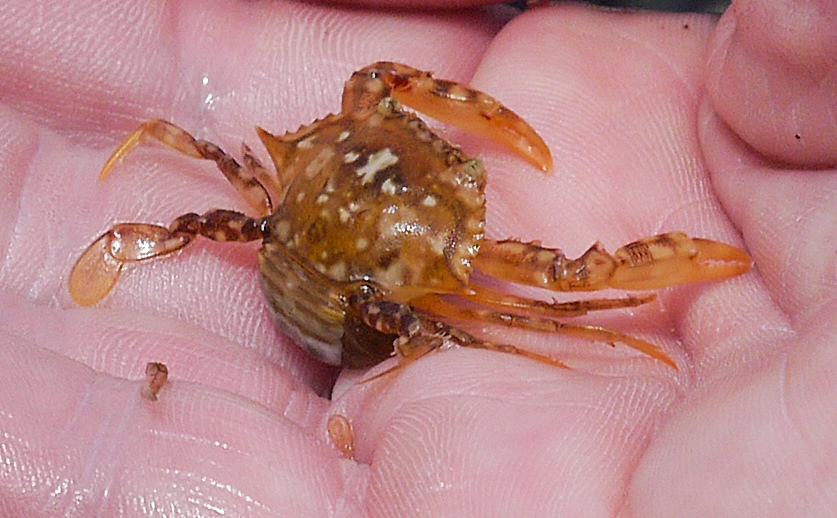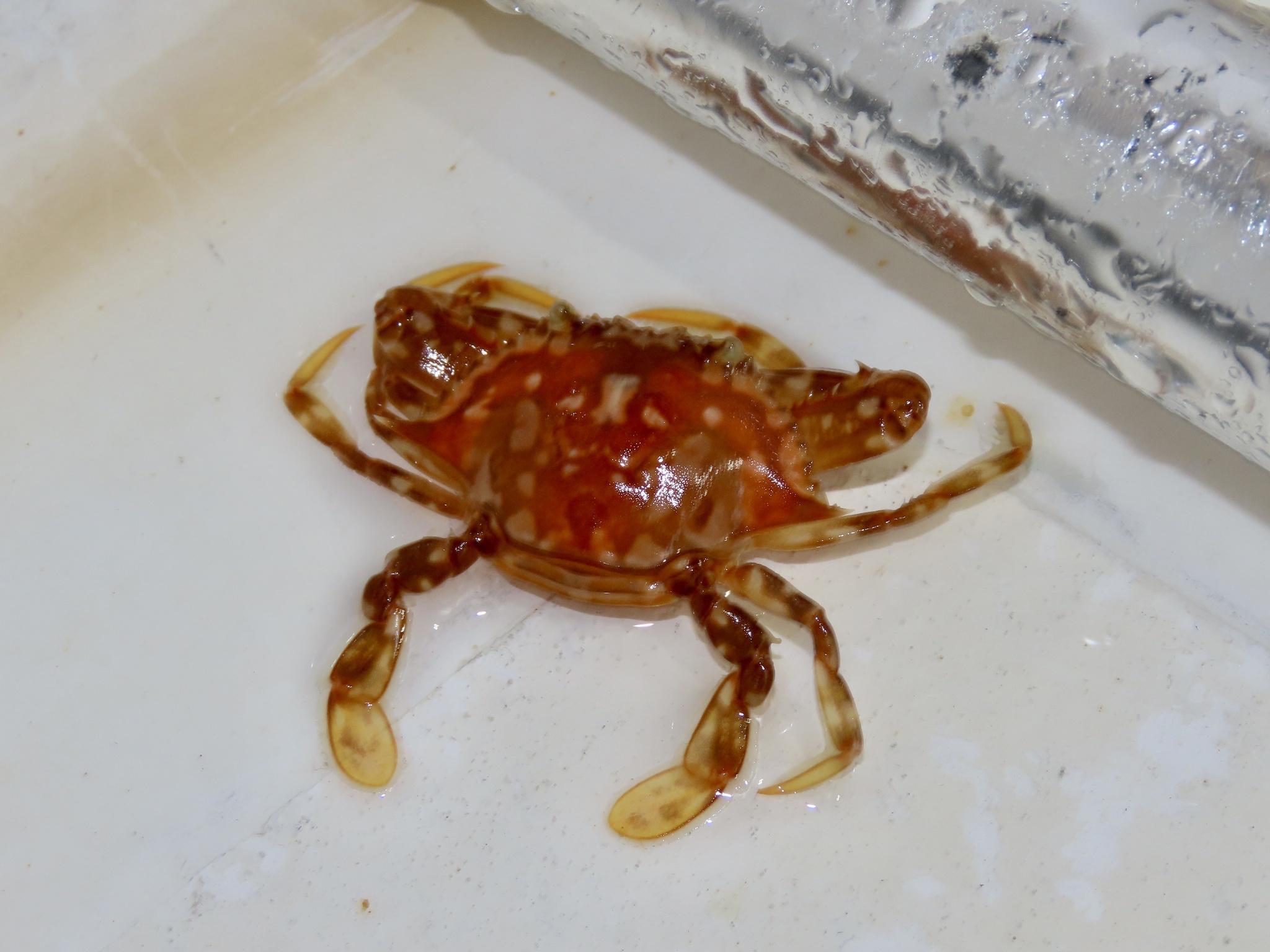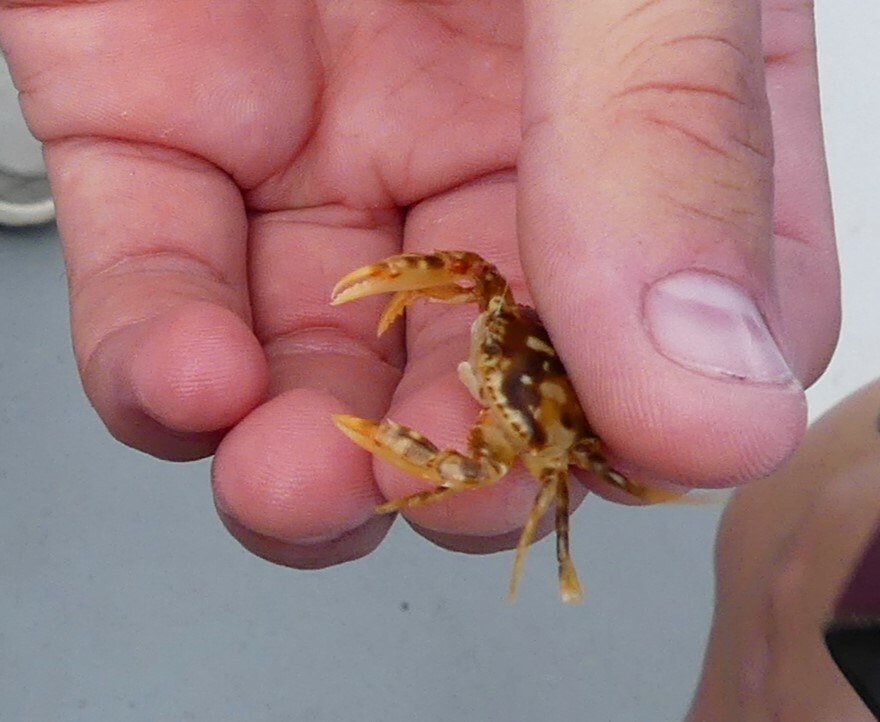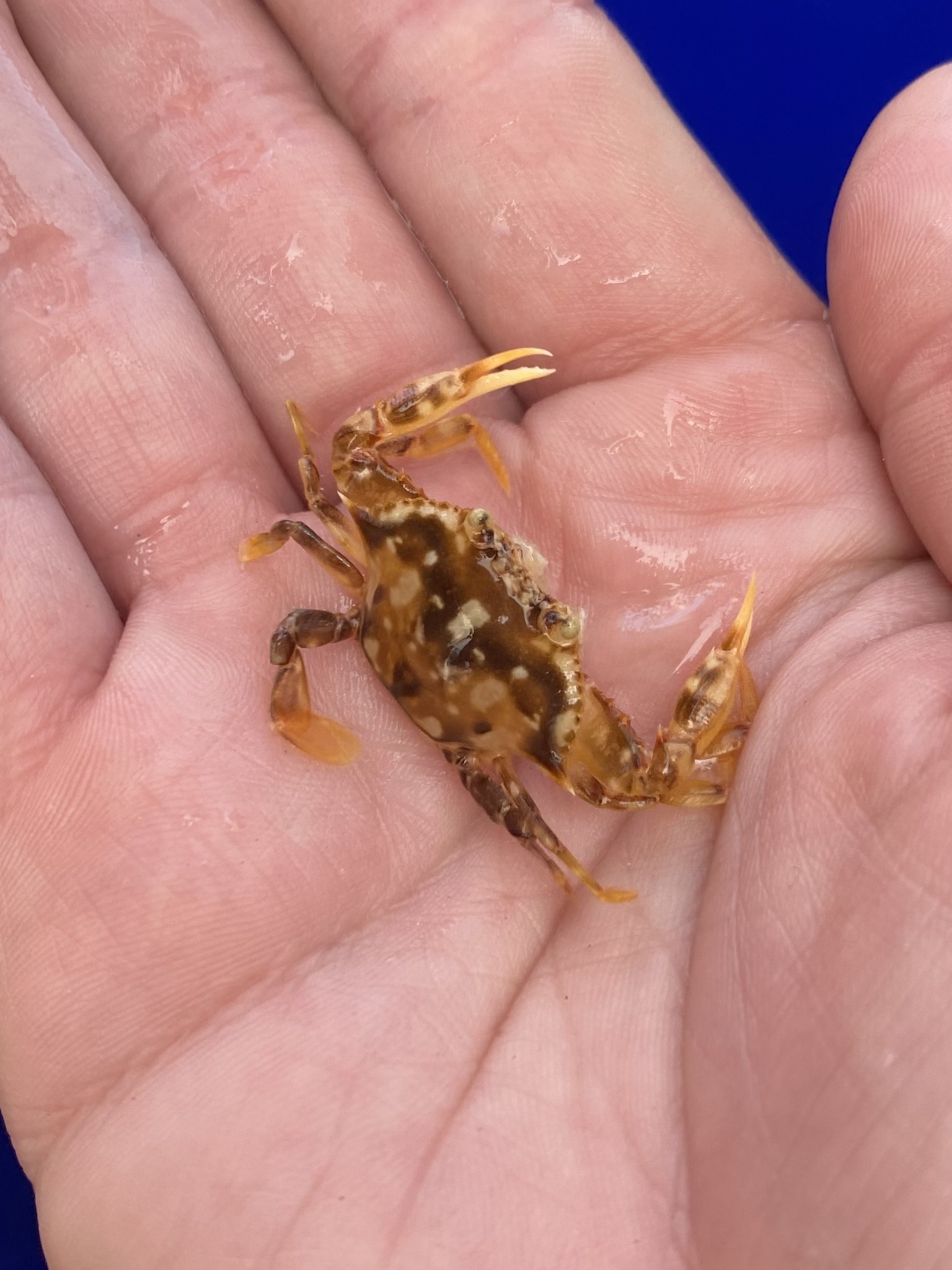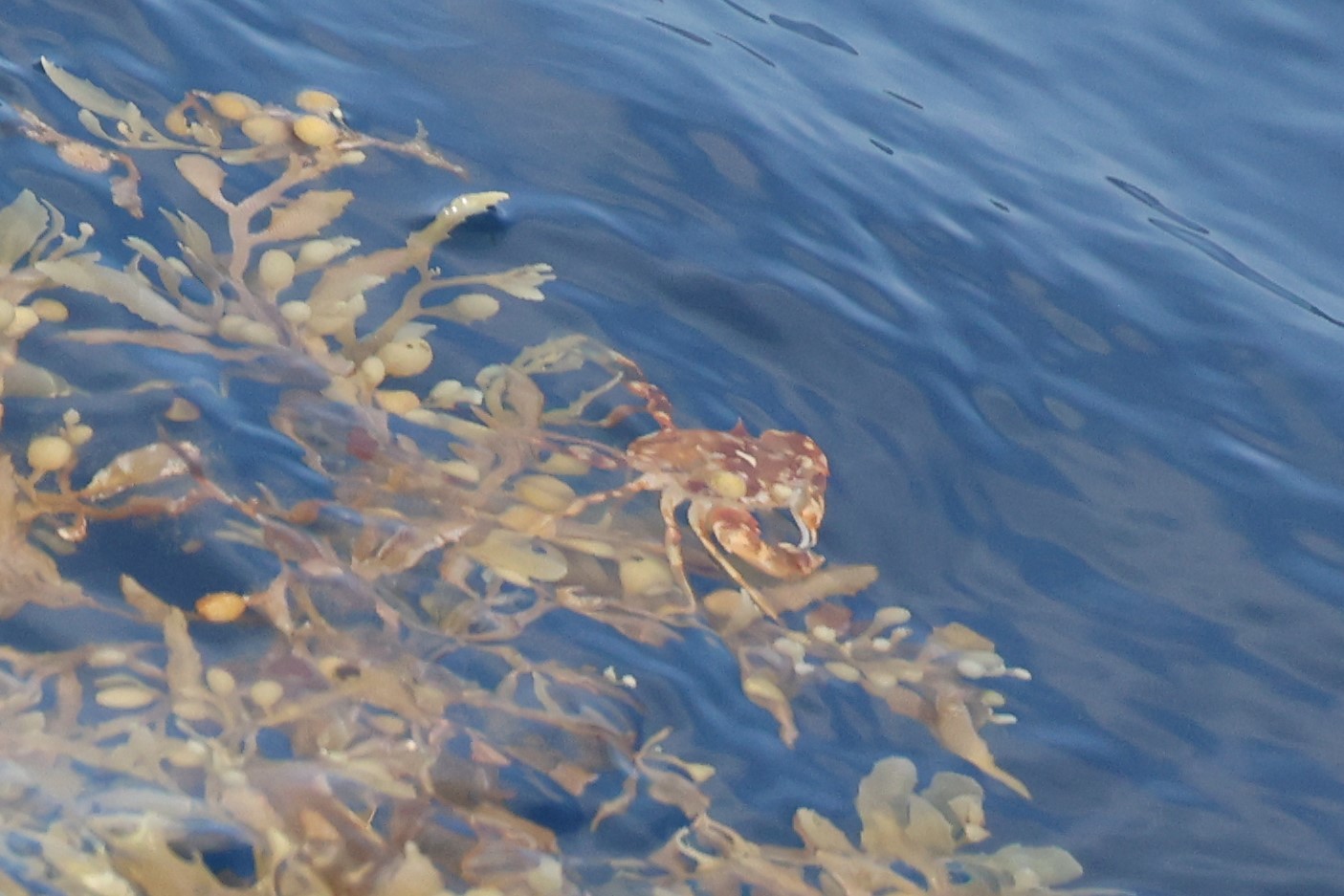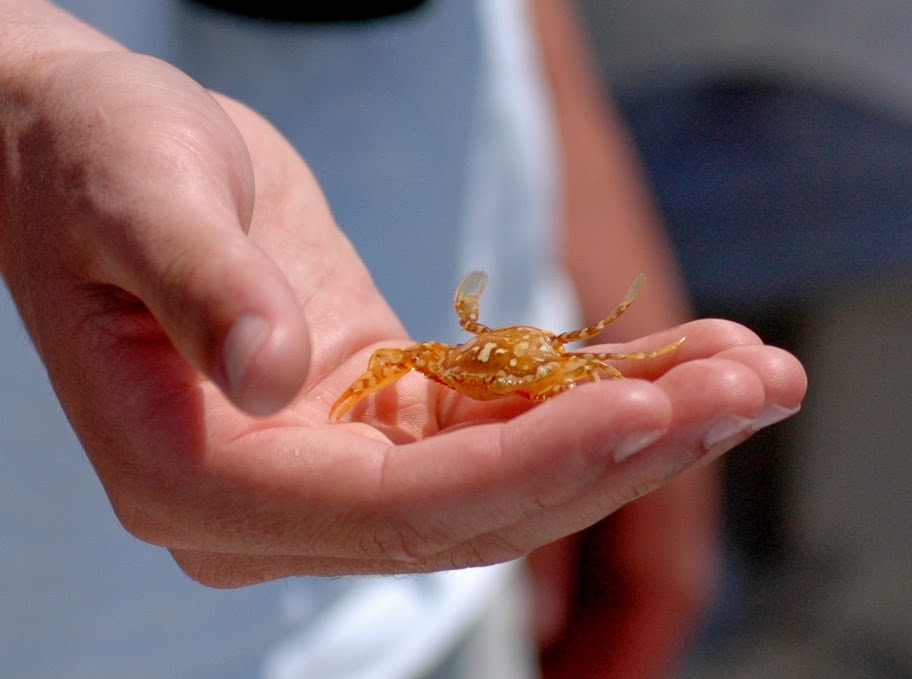Map Snapshot


9 Records
Seasonality Snapshot
Source: Wikipedia
| Portunus sayi | |
|---|---|

| |
| Scientific classification | |
| Domain: | Eukaryota |
| Kingdom: | Animalia |
| Phylum: | Arthropoda |
| Class: | Malacostraca |
| Order: | Decapoda |
| Suborder: | Pleocyemata |
| Infraorder: | Brachyura |
| Family: | Portunidae |
| Genus: | Portunus |
| Species: | P. sayi
|
| Binomial name | |
| Portunus sayi (Gibbes, 1850)[1]
| |
| Synonyms | |
| |
Portunus sayi, the sargassum swimming crab, is a species of pelagic crab in the family Portunidae. It is found in the western Atlantic Ocean and the Caribbean Sea where it makes its home among floating mats of Sargassum seaweed. It was named in honour of the American naturalist Thomas Say.[2]
Description
[edit]Portunus sayi grows to a length of about 5 to 7.5 cm (2 to 3 in).[3] Its smooth, shiny carapace is nearly twice as broad as it is long and has six frontal teeth on each side. The chelipeds (claws) are larger in males than in females and the spines they bear have orange margins. The carapace, claws and legs are usually pale brown with large white or flesh-coloured blotches but the brown colour may have a purplish or greenish tinge.[4] This crab, like other members of its family, is specially adapted for swimming rather than walking as its fourth pair of legs are modified with flattened, paddle-like surfaces. It swims sideways rather than forwards and can move surprisingly swiftly.[5]
Distribution
[edit]Portunus sayi occurs in the western Atlantic Ocean and Caribbean Sea. Its range extends from Nova Scotia and the Gulf of Maine to southern Florida, Bermuda, the Bahamas and the Gulf of Mexico. It is found at depths down to about 18 metres (59 ft).[1][3]
Behaviour
[edit]Portunus sayi is a swimming crab that lives among the tangled masses of Sargassum, a type of brown seaweed that floats in the Sargasso Sea.[6] It is part of a community inhabiting these floating masses which includes fish, nudibranchs, crustaceans, hydroids, bryozoans and polychaete worms. Its colouring provides camouflage among the fronds of seaweed through which it hunts or lies in wait to ambush small items of prey.[7] It has been shown that the crab chooses Sargassum spp. over similar seaweeds such as Thalassia testudinum by detecting chemical cues in the water.[8]
This crab has also been found as an epibiont of loggerhead turtles along with the goose barnacles Lepas anatifera and Conchoderma virgatum, various other crabs, sea spiders, tunicates and hydroids. This is not surprising as young loggerhead turtles live among the floating mats of Sargassum algae feeding on the fauna found there.[9]
References
[edit]- ^ a b Davie, P.; Fransen, C.; Türkay, M. (2013). "Portunus (Portunus) sayi (Gibbes, 1850)". WoRMS. World Register of Marine Species. Retrieved 2013-11-05.
- ^ Hansson, Hans G. "Charles-Alexandre Lesueur". Biographical Etymology of Marine Organism Names. University of Gothenburg. Retrieved 2013-11-06.
- ^ a b Charpin, Florent. "Sargassum Swimming Crab". Caribbean Reefs. Retrieved 2013-11-06.
- ^ Perry & Larsen (2004-04-24). "Swimming Crabs" (PDF). Guide to Shelf Invertebrates, Gulf of Mexico. Retrieved 2013-11-06.
- ^ Colin, Patrick L. (1978). Marine Invertebrates and Plants of the Living Reef. T.F.H. Publications. p. 362. ISBN 978-0-86622-875-6.
- ^ Hartnoll, R. G. (1971). "The occurrence, methods and significance of swimming in the Brachyura". Animal Behaviour. 19 (1): 34–38. doi:10.1016/S0003-3472(71)80132-X.
- ^ Brown, Barry B. (2011-08-03). "Sargassum Swimming Crab, Portunus sayi, Curacao". Coral Reef Photos. Retrieved 2013-11-06.
- ^ West, Lorin E. (2012). "Habitat location and selection by the Sargassum crab Portunus sayi the role of sensory cues". Thesis. State University System of Florida. Retrieved 2013-11-06.
- ^ Frick,Michael G.; Ross, Arnold; Williams, Kristina L.; Bolten, Alan B.; Bjorndal, Karen A.; Martins, Helen R. (2003). "Epibiotic Associates of Oceanic-Stage Loggerhead Turtles from the Southeastern North Atlantic". Marine Turtle Newsletter. 101: 18–20.
